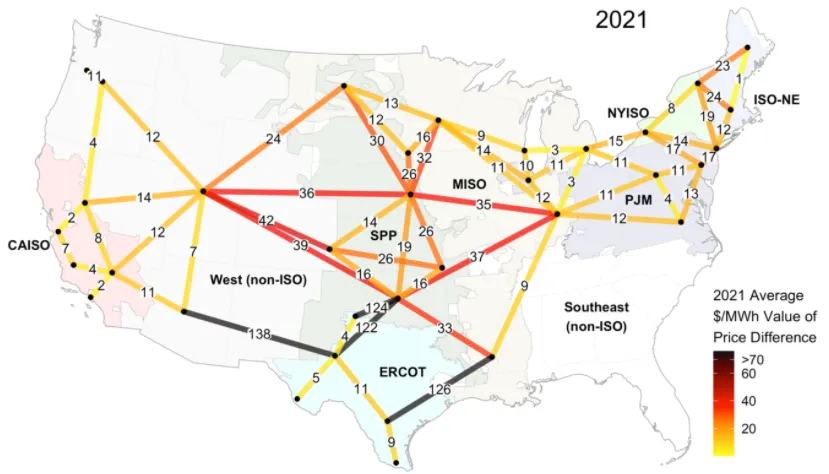There are potential regional and interregional transmission links that could help cut electricity costs, but aren’t being fully valued by transmission planners, according to a study issued Monday by the Lawrence Berkeley National Laboratory.
“Many existing transmission planning approaches are likely understating the economic value of new transmission infrastructure,” LBNL researchers said in a summary of the study.
Extreme grid conditions and high-value periods play an outsized role in the value of transmission, with half of transmission’s congestion value coming from only 5% of hours, the researchers said.
“Only a portion of these hours come from designated extreme events identified by [the Federal Energy Regulatory Commission] and others, meaning that periods that drive transmission value go well beyond historical weather events to also include the many other ‘normal’ drivers for pricing gradations such as uncertain generation or other infrastructure outages, fuel price volatility, forecast errors, and electric demand volatility,” the researchers said.
Transmission planners may understate the benefits of regional and interregional transmission if extreme conditions and high-value periods are not adequately considered, they said.
“The Berkeley Lab study suggests that such [modeling] tools may understate by half the marginal value of transmission in providing congestion relief, by underestimating the role of transmission as insurance against the cost of extreme grid conditions and high-value periods that are natural and oftentimes regularly occurring features of actual market operations,” the researchers said.

Generally, interregional transmission links are more valuable than within-region links, possibly because they increase diversity of weather, load profiles and generator resources across a broader area than what is found within regions, according to the study.
Using data from 2021, interregional links reduced costs by $24/MWh in the median case while regional links lowered costs by $11/MWh in the median case, according to the study.
The report comes as the Federal Energy Regulatory Commission has proposed revising its transmission planning rules and is considering requiring minimum amounts of interregional transfer capability to bolster grid reliability.















